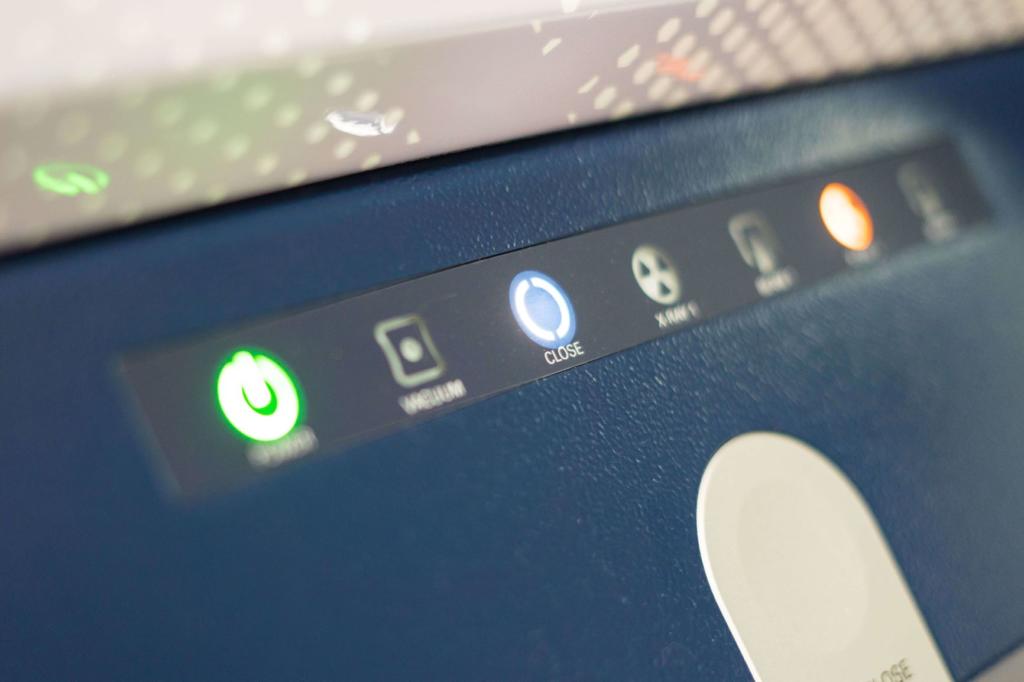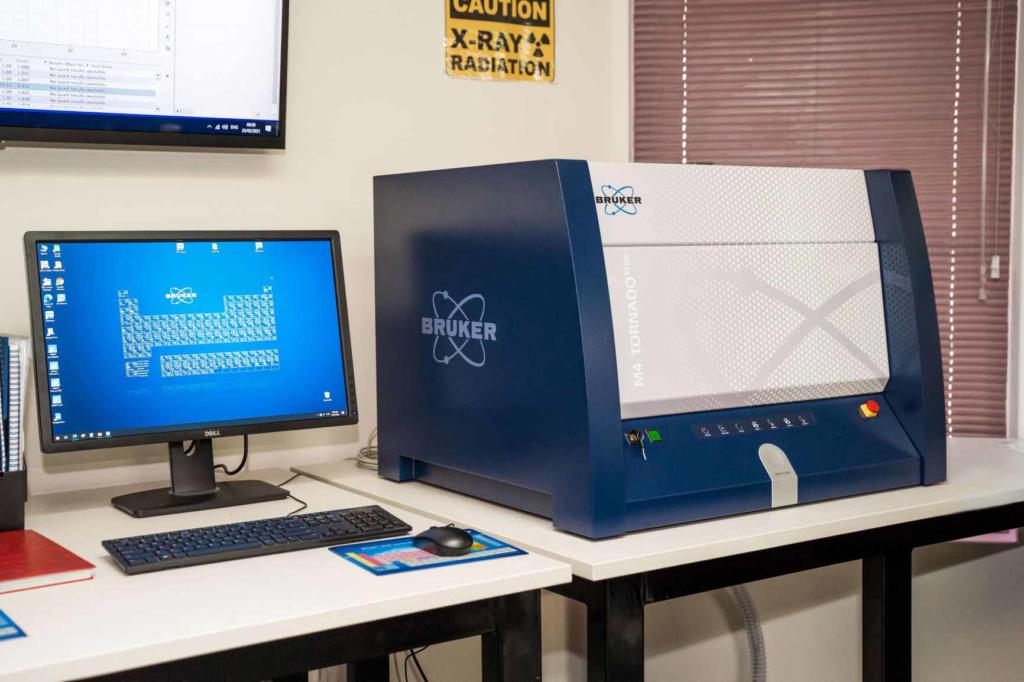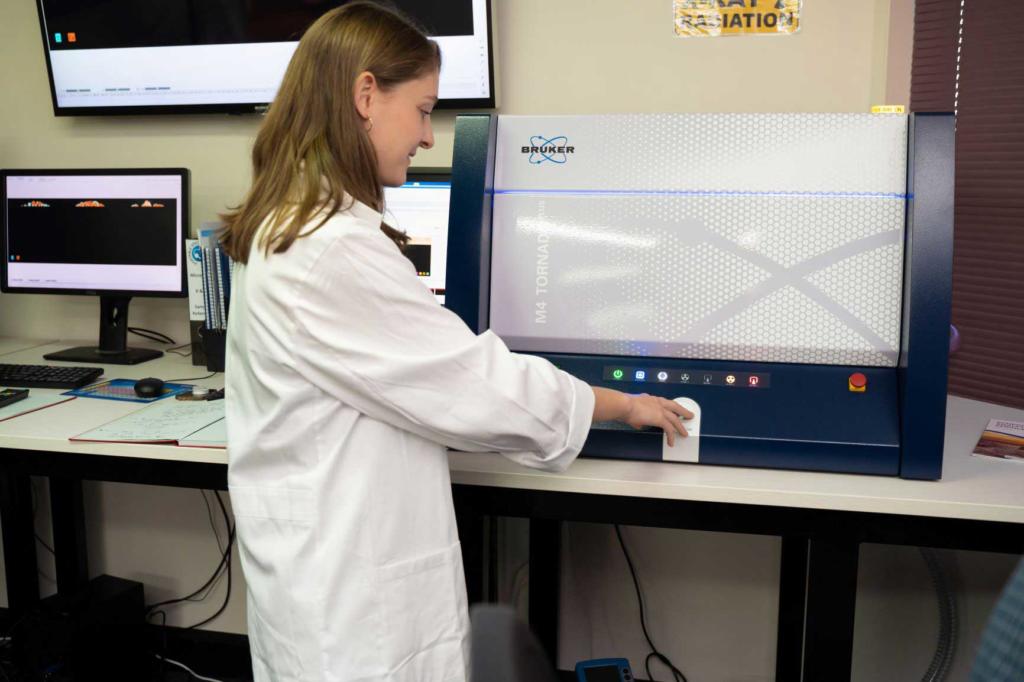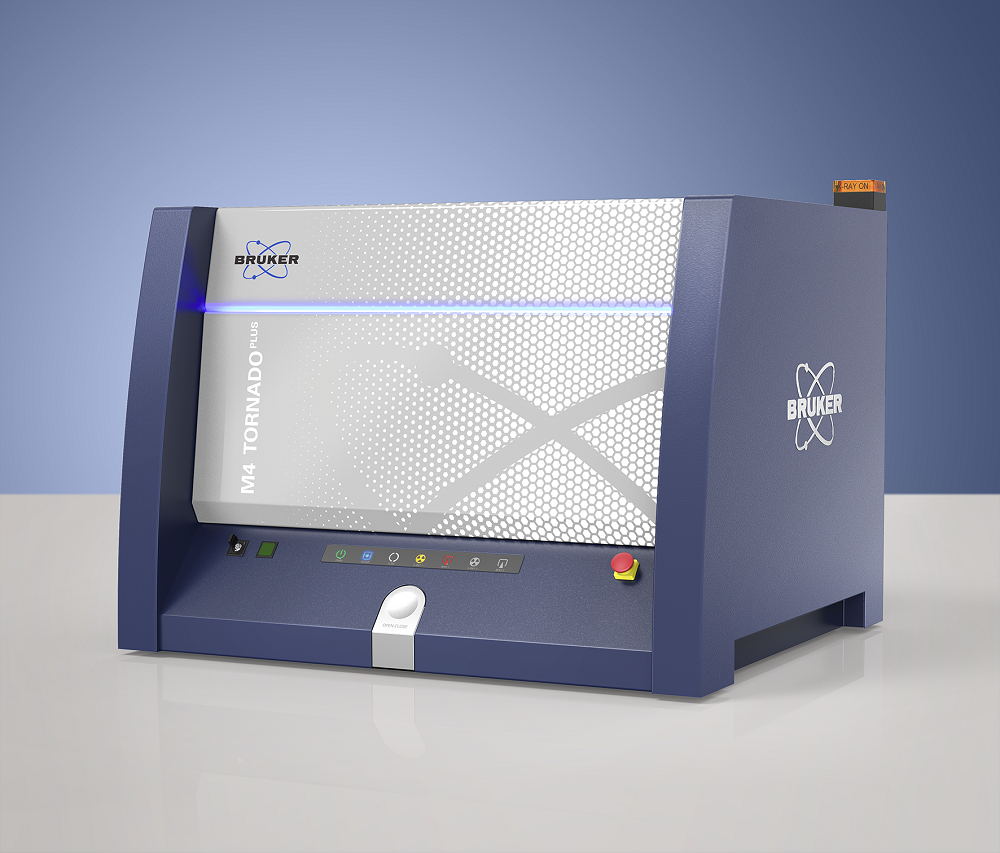Home | M4 TORNADO PLUS
Micro XRF is a rapid technique for acquiring qualitative and quantitative data at a very high spatial resolution (µm scale). The technique is rapid and non-destructive, and is used to quickly acquire qualitative and quantitative geochemical data at high spatial resolution (i.e. mm-scale). Featuring the new dual Silicon Drift Detectors (SDDs) combined with the new super-light element window the M4 TORNADO PLUS is able to detect from carbon (C) to uranium (U), making this the ultimate non-destructive tool available. Measurements are collected under vacuum or normal atmospheric conditions (air), with quantification limits ranging from parts per million to percentage. Going further than other micro-XRF’s on offer, the M4 TORNADO PLUS has the option to analyse at atmospheric pressures in conjunction with a helium-purge system.




What makes the M4 TORNADO PLUS so exciting as a spectrometer is its ability to enable the analysis of light elements. Detect elements with atomic numbers z-11, such as fluorine, nitrogen, oxygen and carbon. Bruker’s newest, most advanced spectrometer, the M4 TORNADO PLUS features the new dual Silicon Drift Detectors (SDDs). Combined with a new super-light element window, the SDD’s lower atmospheric pressure settings to create conditions necessary to detect light elements. This yields a greater response of all light elements, most remarkably being carbon (Z=6), in addition to O, F, Na, Mg, Al, Si, P and S. This has substantially improved the detection and accurate identification of silicates, carbonates and halite phases in samples. The M4 TORNADO PLUS also provides the option to run measurements at atmospheric pressures in conjunction with a helium-purge system, which enhance the response of light elements that cannot be measured under vacuum (e.g., hydroscopic minerals).
Advanced Mineral Identification & Characterisation System known as AMICS, is a software that can provide advanced semi quantitative information on mineral abundance, assay grade, grain size and distribution, in addition to visualisation of the textures and spatial arrangements of the minerals.
A single dataset collected by the μ-XRF can provide both chemical information and mineralogy at a micro scale in a spatial context. This offers detailed knowledge of samples to develop an advanced understanding of a deposit. Further to this, the practicality of μ-XRF use for commercial purposes advantageously bridges the gap between the small scale of Scanning Electron Microscopy (SEM), and analysis at the meter scale.
